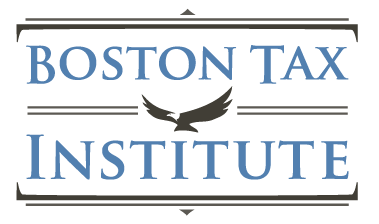In Green, or Greed? A Fresh Perspective on the Valuation of Conservation Easements, three Boston University Law professors, Alan Feld, Theodore Sims and Jacob Nielsen give us a fresh perspective on one of the IRS Dirty Dozen. That would be Abusive Syndicated Conservation Easement, which the IRS Dirty Dozen scam list describes like this:
In syndicated conservation easements, promoters take a provision of the tax law allowing for conservation easements and twist it by using inflated appraisals of undeveloped land (or, for a few specialized ones, the facades of historic buildings), and by using partnership arrangements devoid of a legitimate business purpose. These abusive arrangements do nothing more than game the tax system with grossly inflated tax deductions and generate high fees for promoters.
SCEs Are For HENRY
The IRS closes its description of the abusive SCEs with a statement by Commissioner Rettig:
It is not fair that wage-earners pay their fair share year after year but high-net-worth individuals can, under the guise of a real estate investment, avoid millions of dollars in tax through overvalued conservation easement contributions
My evidence is anecdotal, but I actually believe that SCEs were a way of bringing the tax benefits of conservation easements to HENRY. HENRY is an acronym for High Earner Not Rich Yet. (I wish I could rework the acronym to make if gender neutral, but I will stick with it for now. My HENRY’s preferred pronoun is they.) My anecdotal evidence is that the few people who have called me thinking about this for themselves have been of the HENRY sort. And the origin story of SCE focuses a lot on Rome GA which was something of a medical center. A 40 year old surgeon is very apt to be a HENRY.
Prompted by somebody asking me for alternatives to SCE I surveyed several tax pros and really did not come up with a lot that can be done for HENRY beyond the obvious thing like maximizing contributions to retirement accounts. SCEs are very much tailored to HENRY. The selling season is December for that year and as we learned from some criminal indictments, it can sometimes extend into the subsequent year. In November or early December HENRY’s tax pro comes up with a decent projection of their tax so HENRY can buy a SCE interest that in effect pays a good chunk of the tax for fifty cents on the dollar or so.
Someone who is already rich does not need the promoters to take advantage of the conservation easement deduction. They can afford to buy the property themselves and wait for a few years to make the easement donation. An SCE does not work without a highly inflated valuation. SCEs are based on the theory that the easement on the property can be worth vastly more than what the entire property will change hands for. That is why I call SCE an industry based on nonsense.
But does that mean that other people who are donating easements on land that they have owned possibly for a long time are not also using unreasonable valuations? The professors think not.
Abusive Valuations Are Not Just A Syndication Thing
The professors are reacting to the fact that current legislation proposed to address abuse is limited to syndicated deals. They also note that a proposed limit of 2.5 times cost basis for property held less than three years is overly generous and are concerned that it could be viewed as blessing valuations that are just below that limit.
Efforts to curb conservation easement abuse that are confined to syndicated easements will not be effective to deal with the problem. A glance at the facts and the Tax Court Memorandum opinion in Oakbrook Land Holdings will suffice to highlight that conclusion. The typical SCE against which the government has taken administrative action involves income tax deductions four to five times the participants’ investments in the syndication. In contrast, Duane Horton’s Oakbrook Land Holdings, whose contribution the court expressly noted was “not a syndicated conservation easement,” laid claim to a “charitable” deduction more than 7.5 times the cost of the (recently acquired) land over which the easement was granted.
It is worth noting that the four or five times multiple in SCE is based on the money that the investors paid in not what the promoters paid for the property. Nonetheless they make a good point.
SCEs are not some unexpected perversion, distinguishable in principle from non-syndicated easements, of an otherwise defensible rule; they are simply the reductio ad absurdum of allowing fair market value deductions for contributions of conservation easements attributable to unrealized appreciation in the first place. They lay bare just how vulnerable that allowance is. The willingness of the mainstream conservation easement community to rally around efforts to curb SCEs testifies implicitly to just how rank an embarrassment they are.
Their Proposal
The professors propose an across the board limitation of 100% of basis for the first three years after the property is acquired. From there on in the limitation would increase based on an index of housing prices. The limitation would apply to all easement donations not just syndicated ones. They couple this with a 5% excise tax on the difference between any excess of the contribution over basis. The excise would be on the claimed contribution regardless of whatever was ultimately allowed.
Reaction
I picked this up from Paul Streckfus’s EO Tax Journal, where in issue 2022-125 he noted it as an article of interest without further comment. It was also noted by Lloyd Mayer in the Nonprofit Law ProfBlog. I sought out some more reaction.
Someone very knowledgeable wrote me that overvaluation has been a hallmark of bs tax shelters for many decades. He noted that the issue also exists with shelters that are essentially one-offs to “worthy” clients rather than being mass marketed.
Another off the record comment was from somebody who was sorry to see the professors working on a proposal which will never get anywhere.
Lew Taishoff, who blogs the Tax Court with incredible intensity picked a key quote form the article
That inflation is not, as many proposed solutions to the problem assume, confined to essentially fraudulent “syndicated conservation easements” (“SCEs”), described in detail in a recent Bipartisan Investigative Report of the Senate Finance Committee. Both prior analyses and more recent decisions illustrate that the entire landscape of conservation easement contributions is littered with overvalued deductions. Any remedy premised on the assumption that SCEs are the extent of the problem is destined to leave a great deal of conservation easement abuse untouched. SCEs are just a particularly visible manifestation of a more fundamental problem.
Mr. Taishoff then commented – “The fault, Dear Reilly, is not in syndication, but in the morass of valuation. Preparer penalties for the appraisers is the answer.”
I also received a statement from Robert Ramsay, President of Partnership for Conservation (P4C). P4C is the trade association of the SCE industry.
The BU white paper further validates P4C’s longstanding position that the class of landowner, whether a partnership or an individual, is irrelevant as it relates to the potential for overvaluation of donations of conservation easements. That is why any reforms should be applied equally across classes of land ownership, including any changes that would limit a donor’s deduction, change the required holding period, or provide a grace period to bring easement deed language into compliance. Singling out partnerships for restrictions or providing only certain donors with the opportunity to correct easement deed language would not equitably strengthen the integrity of the conservation easement donation incentive and would limit this critical tool at a perilous time for the environment and critical habitats. P4C remains committed to advancing equitable solutions to uphold the integrity of market-based conservation incentives for generations to come, while maintaining access to participate for all Americans.
Response
I passed Mr. Ramsay’s comments on to the professors. Their response was
The misuse through inflated valuations of Congress’ well-intentioned tax break for conservation easements has grown to multi-billion-dollar proportions. Pending legislation would impose limitations addressed to partnerships as among the most conspicuous offenders. As our paper argues, a more general remedy for the valuation issues, tying the “before” calculation used in valuing an easement to cost basis, would be preferable, but the pending proposals take a step in the right direction. That proposed step could be improved on, however, by limiting the partners’ allowable deductions for the first three years to cost, rather than to some multiple (such as 2.5 times cost). That improvement might eventually pave the way for a more general and effective long-term solution.
What Maybe Worked For Housing
I can’t help but throw in my own idea. What somewhat tamed abuse in the housing tax shelters was to substitute deductions with a credit that is capped in the aggregate and apportioned by state agencies. Although it has its critics and issues that program – Section 42 Low Income Housing Tax Credit – seems to have been a success in many ways. Most notably there has not been much tax litigation about it.
Originally published on Forbes.com.
For great value continuing professional education. I recommend the Boston Tax Institute

You can register on-line or reach them by phone (561) 268-2269 or email vc@bostontaxinstitute.com. Mention Your Tax Matters Partner if you contact them.
For articles oriented toward tax professionals check out Think Outside The Tax Box.
































































































